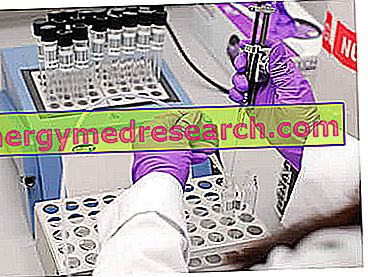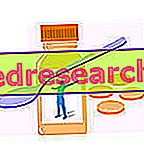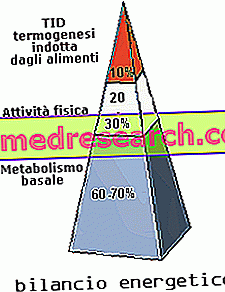Genetic doping and candidate genes
Any physiological process related to energy production and movement could be considered a potential target of genetic doping, aimed at achieving a greater sports performance.

Furthermore, the prospect of genetic doping, compared with other forms of pharmacological doping, is even more attractive due to the fact that with the current anti-doping controls in use it is practically impossible to prove that there has been genetic doping.
Possible genes candidates for genetic doping have been divided into groups based on their effect in relation to processes related to physical performance; however, some are related to more than one group considering the complex biological functions in which they are involved.
Genes related to endurance (endurance)
Erythropoietin : Performance in endurance sports can be implemented by increasing the transport of oxygen to tissues, for example by increasing the number of red blood cells (which contain hemoglobin, the protein that binds and transports oxygen) into the circulation. The number of red blood cells produced by the body (erythropoiesis) is finely regulated by erythropoietin (EPO), a glycoprotein synthesized by the kidney and minimally by the liver.
Erythropoietin, whose production is regulated by the concentration of oxygen in the blood, interacts with a specific receptor (EPOR) present in the precursor cells of red blood cells in the bone marrow. High levels of circulating EPO stimulate red blood cell production and result in an increase in hematocrit (the percentage of corpuscular elements in the blood: red blood cells, white blood cells and platelets) and total hemoglobin. The final effect is the increase in oxygen transport to the tissues.
In 1964, the Northern Finnish skier Eero Mäntyranta made the efforts of the opponents useless by winning two Olympic gold medals at the Games in Innsbruck, Austria. After a few years, it was shown that Mäntyranta was a carrier of a rare mutation in the EPOR gene that made it active even in the presence of low EPO levels, thus increasing the production of red blood cells with a consequent increase in oxygen transport capacity of the 25-50%.
The therapeutic potential of EPO and all the factors that stimulate EPO production is related to the treatment of severe anemia; the possibility of using gene therapy techniques instead of administering the recombinant peptide, thus inducing the spontaneous synthesis of EPO in the body, would have positive effects both from the clinical and economic point of view. The first clinical trial used EPO gene therapy in patients with chronic renal failure anemia, with an ex vivo approach that however gave limited results.
Another obstacle to overcome is represented by the many side effects linked to the use of EPO, the same ones that constitute the greatest risks of the administration of EPO in athletes. The increase in red blood cells decreases the fluidity of the blood, increasing its solid or corpuscular part (hematocrit). This increase in viscosity causes an increase in blood pressure (hypertension) and facilitates the formation of thrombi which, once formed, can occlude blood vessels (thrombosis). This risk increases considerably in the event of dehydration, as is usually the case in endurance races. The most serious side effects of this substance include cardiac arrhythmias, sudden death and brain damage (stroke).
PPARD (peroxisome proliferator-activated receptor delta ): animal model studies have shown the existence of another family of genes able to significantly increase athletic performance, PPARD (peroxisome proliferator-activated receptor delta) and alpha co-activators and beta (PPARGC1A and PPARGC1B). The expression of PPARD in particular is able to promote the passage of muscle fibers from type IIb to rapid contraction (also called white, "fast twitch") to those of type IIa (intermediate) and type I lens (also called red, "slow twitch"), which is what happens physiologically following constant physical exercise. IIb fibers are usually recruited during short exercises that require a large neuromuscular effort. They are activated only when the recruitment of slow-twitch fibers is maximum. Slow-twitch muscle fibers (red, type I or ST, from the English "slow twitch"), are instead recruited in low-intensity but long-lasting muscle actions. Thinner than white, red fibers retain more glycogen and concentrate the enzymes associated with aerobic metabolism. Mitochondria are more numerous and larger, just like the number of capillaries that injects the single fiber. The reduced size of the latter facilitates the diffusion of oxygen from the blood to the mitochondria, due to the smaller distance between them. It is precisely the abundant content of myoglobin and mitochondria that gives these fibers their red color, from which their name derives.
Studies on a transgenic mouse model ("marathon mouse") that over expresses PPARD have shown an enormous increase in resistance to physical effort, without there being an increase in muscle mass and the ability to deal with aerobic exercise.
A synthetic compound (GW501516) was also identified that was able to bind to the PPARD receptor and activate it; as such, it could therefore represent a possible doping agent also in humans.
Angiogenesis related genes : Potential targets of genetic doping are also genes belonging to families of vascular endothelial growth factor (VEGF), tissue growth factor (TGF) and hepatocyte growth factor (HGF); the expression of these genes is in fact correlated to the increase in angiogenesis (formation of new blood vessels).
The formation of new vessels means that there is a greater supply of blood, and therefore of oxygen, to the heart, muscles, liver and brain, with a consequent increase in the capacity of resistance to physical effort.
Stimulation of angiogenesis is also useful in situations of prolonged ischemia, such as in patients with myocardial ischemia; clinical trials conducted on these patients using in vivo intra-muscle or intra-coronary injections of VEGF and FGF have had very positive results. However, there are several side effects and risks associated with angiogenesis-stimulating gene therapy, for example the increased risk of inducing the development of neoplastic diseases and worsening retinopathy and atherosclerosis.



